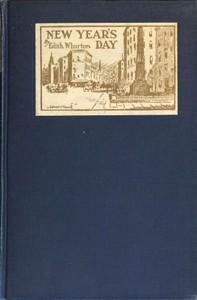Read this ebook for free! No credit card needed, absolutely nothing to pay.
Words: 141813 in 58 pages
This is an ebook sharing website. You can read the uploaded ebooks for free here. No credit cards needed, nothing to pay. If you want to own a digital copy of the ebook, or want to read offline with your favorite ebook-reader, then you can choose to buy and download the ebook.


: Measure Your Mind: The Mentimeter and How to Use It by Stockbridge Frank Parker Trabue Marion Rex - Intelligence tests; Psychological tests; Educational tests and measurements
II THE APPLICATIONS OF PSYCHOLOGICAL TESTS 16
V DIFFERENT TYPES OF MENTAL TESTS 44
VI MENTAL TESTS IN THE ARMY 53
X THE MENTIMETER TESTS 109
APPENDICES 287
MEASURE YOUR MIND
There are two ways, and only two, in which we can find out what a machine is capable of doing. One of these is to try it out, to "put it through its paces" by using it for every sort of work which it is expected to perform and observing whether or not it does what we want it to do. The other way is to measure it and compare these with the measurements of the essential parts of machines with the performance of which we are already familiar.
Unless it is a brand-new type of machine, designed to do something that has never before been done by machinery, or to do it by a different mechanical method, there is obviously a great saving of time and money in buying a machine from specifications that insure the correct performance of its expected duty over the other plan of first buying the machine and then trying it out in practice to see whether it will do what we want done.
The manufacturer or business man who would purchase machinery of any sort without first making certain that its dimensions, speeds, weight, power-consumption, controls, and the materials used in its construction were such as to adapt it precisely to the work he expected to do with it would speedily bankrupt his business. It takes but a moment's thought for the reader to prove this to himself.
On the other hand, however, we find business men constantly employing men and women to perform specific duties without applying any tests or measurements, other than the most rudimentary ones, to determine in advance whether the person so employed is fitted for the work he or she is expected to do. And as every employer knows, one of the most costly wastes in almost every business or manufacturing establishment is the expense of constantly "breaking in" new employees to take the places of those who have left or have been dismissed because they were found, after trial, not to be fitted for the duties to be done.
Because the installation of machinery of any kind involves an initial outlay of money, it long ago became apparent to everybody that the "trial and error" method of buying machines or other commodities was wasteful and ruinous. It was not until recent years, however, that the closer study of operating costs disclosed the fact that the expense of "labour turnover," that is to say the proportion of employees in any given business whose places have to be filled annually, is one of the heaviest avoidable drains on income. This was long overlooked because no capital investment is involved in the initial employment of labour. The cost of training new employees is much larger, it is now learned, in most businesses, than is generally understood, not only in the direct outlay in salary or wages before the new employee has mastered the duties of the new position as well as he or she is able, but in loss through spoiled materials, reduced individual output, and often in the slowing down of an entire chain of manufacturing operations through the inability of the inexperienced worker to maintain the pace of the rest of the links in the chain.
If, then, as so often happens, it is found after experiment that the new employee is not capable of performing the work efficiently, the whole process must be repeated. The employee who has failed leaves, is dismissed, or is transferred to another department, and a new and equally inexperienced worker employed to fill the vacancy, with the whole cost of training to be incurred over again. Even though the new worker may be experienced in the particular class of work to be done, there is an appreciable loss due to the unavoidable frictions and hesitations that occur whenever a worker is being fitted into a new environment.
Free books android app tbrJar TBR JAR Read Free books online gutenberg
More posts by @FreeBooks


: New Year's Day (The 'Seventies) by Wharton Edith Caswell Edward C Illustrator - New York (N.Y.) Social life and customs Fiction; Married women Fiction; Widows Fiction; Man-woman relationships Fiction







